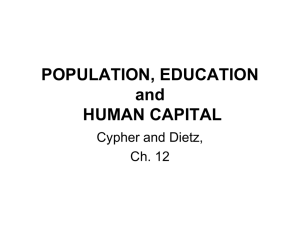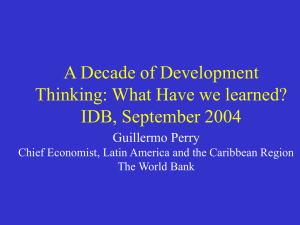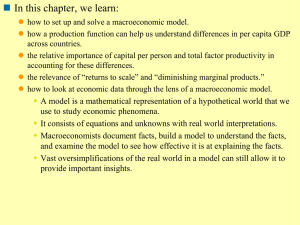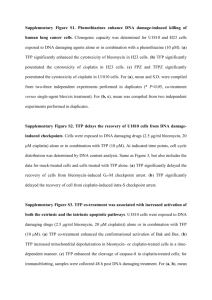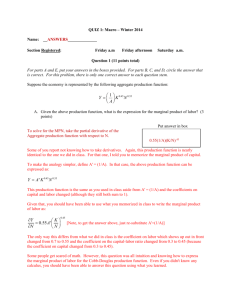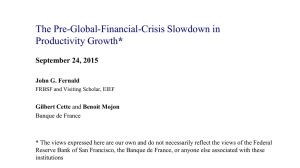Developement Economic Chapter 4
advertisement
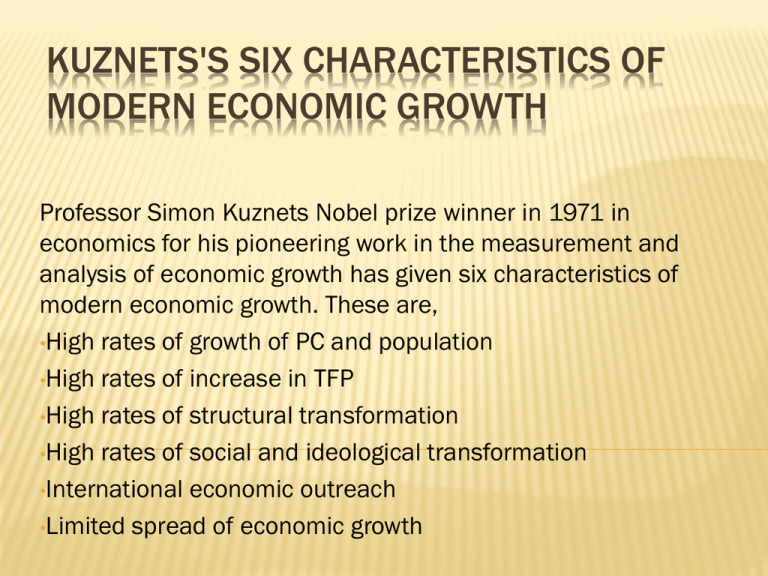
KUZNETS'S SIX CHARACTERISTICS OF MODERN ECONOMIC GROWTH Professor Simon Kuznets Nobel prize winner in 1971 in economics for his pioneering work in the measurement and analysis of economic growth has given six characteristics of modern economic growth. These are, •High rates of growth of PC and population •High rates of increase in TFP •High rates of structural transformation •High rates of social and ideological transformation •International economic outreach •Limited spread of economic growth HIGH RATES OF PER CAPITA OUTPUT AND POPULATION GROWTH In case of both per capita output and population growth all developed countries have experienced large multiples of their previous rates from around 1770 to the present. For the now industrialized countries annual growth rates over this period averaged almost 2% per capita output and 1% for population or 3% for total output (real GNP).These rates imply a doubling time of roughly 35 years for pc output,70 years for population and 23 years for real GNP. For the last two centuries the growth rate of per capita out put is about 10 times ,population growth 4 to 5 times and the GNP growth rate have been 40 or 50 times. HIGH RATES OF TOTAL FACTOR PRODUCTIVITY INCREASE The second aggregate economic characteristic of modern growth is relatively high rate of rise in TFP,the output per unit of all inputs. TFP shows the efficiency with which all inputs are used in a production. Kuznets found substantial rise in TFP in modern era. William Easterly has found that the growth of countries is not due to factor accumulation but due to TFP. Historical facts suggests that the rate of increase in TFP account for about 50 to 75% per capita output in developed countries, this due to technological progress. HIGH RATES OF ECONOMIC STRUCTURAL TRANSFORMATION The third important characteristic of historical growth is a high rate of structural and sectoral change. This structural change include the gradual shift from agriculture to non-agriculture and more recently towards services, a significant change in the scale or average size of productive units (from personnel and family enterprises to impersonal of national and international MNC’s),and also share of labor in non agriculture activities. For example in US labor engaged in agriculture was 53% in 1870 and now about 2%. HIGH RATES OF SOCIAL AND IDEOLOGICAL TRANSFORMATION Changes in attitudes, institutions and ideologies are also an integral part of economic development. According to Myrdal these include Rationality Economic planning Social and economic equalization Improved institutions and attitudes INTERNATIONAL ECONOMIC OUTREACH Another important characteristic of modern economic growth of countries relates to the historical and ongoing propensity to reach to the rest of the world for primary products and raw material, cheap labor and lucrative markets for their manufactured products. With increase in transport and communication globalization has occurred. LIMITED INTERNATIONAL SPREAD OF ECONOMIC GROWTH In spite of the enormous increased in world output over the past two centuries, the spread of sustained modern economic growth is still largely limited to less than one third of world population(about 15%). Unequal international power relationships between developed and underdeveloped countries may have a tendency to exacerbate the gap between rich and poor.
